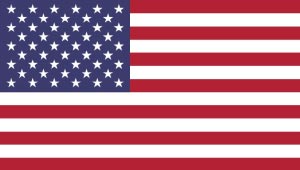Blood Draw Procedures 5th of 13
Other sites to avoid, where mastectomy was performed on that side of the body there’s Lymph node issues that can come into play if you draw blood from that side of the body. Women should always be asked if they had a mastectomy and avoid that site of the body. If there’s any edema, hardened veins, tattooed areas, tattooed areas you know there’s ink in there that can contaminate, that can go into the vial, there’s other issues with drawing from those spots. So you’re supposed to avoid tattooed areas. I’ve been hearing above IV. This is kind of important because if you have an accident and EMT is already arrived or the person was transferred to the hospital an IV is probably already administered and fluids have been administered through the IV. You’re not sure what fluids have been administered yet. But you don’t want to draw blood for forensic testing from the IV because there are other chemicals that are going to be mixed with whatever comes out and you don’t ever draw above the IV location because whatever is going in that IV into that vein you’re going to get from the blood that’s moving in that direction. So you want to draw below an IV spot. We’ve had a few cases where that’s come into play and they have drawn from above the IV location.
Right so palm, under side of wrists, because of nerves, I’ll show you an example this is my paralegal has a little bit of ink. She likes tattoos, this is one of her—she has two twins and she got her twins’ initials one on each wrist, the white writing is—it is a white tattoo but this was a few days ago and the same nurse we had drew her blood on many occasions drew from this area and she hit a she burst a blood vein and 3 days later she had this huge bruise on her arm so it’s difficult even for a person who has a lot of experience doing it there can still be problem you can hit veins you can burst vessels if you don’t go into the right angle you might go through the vein or not into the vein far enough that typically supposed to be about a 30 degree inversion.
The tourniquet technique 3-4 inches above venipuncture site and don’t leave on for more than a minute, and the reason again is that can cause matter concentration you don’t want the blood going into the container too rapid at a rate or else it’ll slam against the container and it can cause it to burst releasing all of the contents of the red blood cells. You want to avoid that. Swabbing, we’re supposed to ask people if they have allergies to betadine, if they do its even okay to use soap and water. I think that’s acceptable in the field and then obviously let it dry, people—these blood drawers are notorious for swabbing and immediately doing the venipuncture without letting the cleansing agent do its job. So here’s just a picture of an alcohol swab. The colors of the tubes everybody knows that means is different additives in them use different color tubes for different things grey tops are used for blood draws and blood ethanol analysis and if you’re at a hospital, they are going to draw different color tubes. There’s an order that you need to follow grey tops should be last.
You can go online to bdvacutainer and print out one of these color charts, it’s real helpful it shows you what they’re used for what all the additives are what they mean. I see a lot of times people drawing out of order and I told-I wanted them to do that wrong way where they drew the purple top first and then the grey top I mean the grey top and then the purple but they didn’t get that wrong enough but here’s an example of one versus evidence 1.1 grey top 1.2 redtop 1.3 grey top. So they drew red top in the middle of two, that’s not really the proper order.






